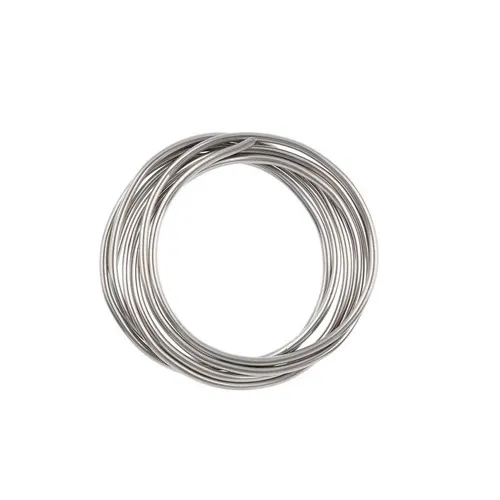-
 Phone:
Phone: -
 Email:
Email:

Best Deals on High-Quality Baling Wire for Your Needs
Exploring the Market for Baling Wire A Comprehensive Guide
Baling wire is an essential component in various industries, particularly in agriculture and recycling. It is primarily used to bind bales of materials, ensuring they remain compact and easy to handle. As agricultural practices evolve and recycling efforts intensify, the demand for high-quality baling wire has surged. In this article, we will delve into the intricacies of baling wire, its different types, applications, and factors to consider when purchasing it.
What is Baling Wire?
Baling wire is a type of metal wire designed for binding bales of hay, straw, cotton, and other materials. It is typically made from steel and is characterized by its strength and durability. The wire is available in various gauges and specifications, allowing users to select the appropriate type for their specific needs. Its primary role is to hold bales tightly together, maintaining their shape during transportation and storage.
Types of Baling Wire
There are several types of baling wire available in the market
1. Galvanized Baling Wire This type of wire is coated with zinc to prevent rust and corrosion. Galvanized baling wire is commonly used in agricultural settings due to its long-lasting properties and ability to withstand harsh weather conditions.
2. Black Annealed Baling Wire Made from low carbon steel, black annealed wire is treated with heat to enhance its flexibility and strength. This type is particularly favored for its ease of use, as it can be twisted and tied without breaking.
3. Tensile Strength Baling wires also vary in terms of tensile strength, which is a measure of how much pulling force the wire can withstand before breaking. Higher tensile strength wires are essential for heavier bales or when bundling materials with greater density.
Applications of Baling Wire
baling wire for sale

The applications of baling wire are vast and varied. In agriculture, it is used primarily for binding hay, straw, and cotton bales. Farmers depend on reliable baling wire to ensure their harvest is packaged efficiently, allowing for easier transportation and storage.
In the recycling industry, baling wire is crucial for compressing and bundling materials such as cardboard, plastics, and scrap metals. This bundling not only optimizes space during transportation but also facilitates the recycling process by keeping materials organized and manageable.
Purchasing Baling Wire Key Considerations
When looking to purchase baling wire, there are several important factors to consider
1. Gauge and Diameter The gauge refers to the thickness of the wire. A lower gauge means thicker wire, which may be required for heavier materials. It is essential to choose the right gauge based on the specific needs of your operation.
2. Coating Depending on the environment in which the wire will be used, the type of coating can play a significant role. For outdoor use or in damp conditions, galvanized wire may be a better choice to prevent rust.
3. Length and Quantity Baling wire is sold in various lengths and spool sizes. Depending on the scale of your operation, consider how much wire you will need to avoid frequent re-orders and ensure efficiency.
4. Supplier Reputation Quality matters when it comes to baling wire. Research potential suppliers to find trusted sources that offer high-quality products. Reviews from other customers can provide insight regarding the reliability and performance of the wire.
Conclusion
Baling wire is a vital resource in both agricultural and recycling sectors. Its role in ensuring the integrity of bales is indispensable, as it directly affects efficiency and effectiveness in handling and transporting materials. When looking for baling wire for sale, consider the type, gauge, coating, and supplier to ensure you are getting the best product for your needs. The right baling wire not only enhances productivity but also contributes to a more sustainable future in agricultural practices and recycling efforts. Thus, investing in quality baling wire is an investment in the success of your operations.
-
Wire Mesh for Every Need: A Practical SolutionNewsJul.25,2025
-
Steel Fences: Durable, Secure, and Stylish OptionsNewsJul.25,2025
-
Roll Top Fencing: A Smart Solution for Safety and SecurityNewsJul.25,2025
-
Cattle Farm Fencing Solutions for Maximum SecurityNewsJul.25,2025
-
Affordable Iron Binding Wire SolutionsNewsJul.25,2025
-
Affordable Galvanized Wire SolutionsNewsJul.25,2025
-
Wire Hanger Recycling IdeasNewsJul.25,2025








